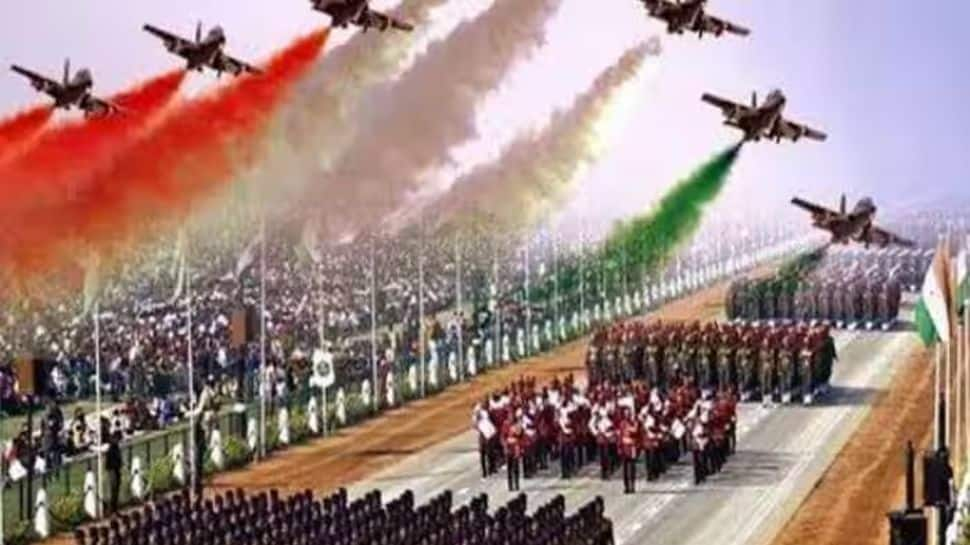 |
|
India's 76th Republic Day celebrations on January 26th, 2024, unfolded as a vibrant display of national pride, showcasing both the nation's military prowess and its rich cultural heritage. The event, held on Kartavya Path, served as a powerful symbol of the confluence of 'virasat' (heritage) and 'vikas' (progress), perfectly encapsulating the theme of 'Swarnim Bharat: Virasat aur Vikas' (Golden India: Heritage and Progress). This year held added significance, marking the 75th anniversary of the enactment of the Indian Constitution, a cornerstone of the nation's democratic framework. The presence of Indonesian President Prabowo Subianto as the chief guest further highlighted India's strong diplomatic ties with Indonesia, a relationship that dates back to the first Republic Day celebrations in 1950 when Indonesia's first president, Sukarno, served as the chief guest.
The military parade was a centerpiece of the celebrations, featuring a remarkable showcase of cutting-edge defence technologies. For the first time, several advanced platforms made their appearance, including the BrahMos supersonic cruise missile, the Pinaka multi-barrel rocket launcher, and the Akash surface-to-air missile system. The Army's Battle Surveillance System 'Sanjay' and DRDO's surface-to-surface tactical missile 'Pralay' also made their debut in the parade, underscoring India's advancements in defence capabilities. Other notable military hardware displayed included T-90 'Bhishma' tanks, Sarath infantry carrying vehicles, a Short Span Bridging System, the Nag Missile System, the Agnibaan multi-barrel rocket launcher, and the Bajrang light specialist vehicle. The impressive array of weaponry served as a powerful testament to India's growing military strength and technological prowess.
Beyond the military display, the parade included sixteen tableaux from various states and Union Territories, along with fifteen tableaux from central ministries, departments, and organizations. These visually stunning representations provided glimpses into the diverse cultural tapestry of India, highlighting the unique traditions, arts, and heritage of different regions. The participation of a 352-member marching and band contingent from Indonesia added an international flavor to the event, further emphasizing the close bonds between the two nations. The tri-services tableau, a new addition this year, epitomized the spirit of 'jointness' among the Indian armed forces, showcasing a synchronized operation in land, water, and air, featuring the indigenous Arjun battle tank, Tejas fighter aircraft, and advanced light helicopters under the theme 'Shashakt aur Surakshit Bharat' (Strong and Secure India). The DRDO also presented a tableau, themed 'Raksha Kavach -- multi-layer protection against multi-domain threats', showcasing the organization’s contributions to national security.
The Republic Day celebrations extended beyond the parade. President Droupadi Murmu delivered a national address on the eve of Republic Day, setting the tone for the celebrations and reflecting upon the significance of the Constitution's 75th anniversary. Prime Minister Narendra Modi led the nation in paying homage to the martyrs at the National War Memorial before the commencement of the parade. The parade itself, lasting for 90 minutes, commenced with a National Salute and featured a diverse range of elements, showcasing India's heritage and the remarkable progress made over the years. The participation of 300 cultural artistes playing 'Sare Jahan Se Achha' on musical instruments representative of different parts of India added a touch of vibrant cultural expression to the event. A flypast featuring over 40 Indian Air Force aircraft and three Dornier aircraft from the Indian Coast Guard concluded the spectacular event in the sky. The participation of Kargil war heroes – two Param Vir Chakra awardees and one Ashok Chakra awardee – added a poignant element of remembrance and recognition.
The Indian Army's participation in the parade was particularly noteworthy. It included a mounted column, eight mechanized columns, and six marching contingents, with the 61 Cavalry representing the mounted column. The marching contingents showcased the diversity within the Army, representing units like the Brigade of the Guards, Jat Regiment, Garhwal Rifles Regiment, J&K Light Infantry (JAKLI), and the Corps of Engineers. The inclusion of Capt Ritika Khareta, the only female member in her contingent, as the contingent commander for the Army's Corps of Signals, symbolized the growing role of women in the Indian armed forces. The daredevils of the Corps of Signals provided an exciting display of motorcycle skills, with Capt Ashish Rana leading the team and Capt Dimple Singh Bhati making history as the first female officer to perform a ladder-borne salute to the President during the Republic Day parade. This moment underscored the changing dynamics within the Indian military, showcasing advancements in gender equality.
The tableaux showcased a rich diversity of Indian states and union territories. Uttar Pradesh, Uttarakhand, Haryana, Bihar, Jharkhand, Gujarat, Tripura, Andhra Pradesh, and Karnataka were among the states participating, each providing a unique representation of its cultural identity. Delhi and Chandigarh were among the Union Territories exhibiting their tableaux, further highlighting the nation's diversity. The entire event was meticulously planned and executed under the command of Lt Gen Bhavnish Kumar, General Officer Commanding, Delhi Area, as the Parade Commander, with Maj Gen Sumit Mehta serving as the Parade Second-in-Command. The event not only showcased India's military strength but also served as a vibrant tribute to the nation's cultural heritage and its democratic ideals, marking a significant milestone in the nation's history – the platinum jubilee of the Indian Constitution.
